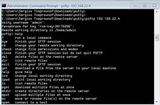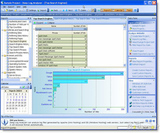PSFTP Commands.
PSFTP can execute most of the primary PSFTP command lines that are only supported by the PuTTY application. Users must ensure that they apply only commands related to the file transfer utility. You can type 'help' at the PSFTP prompt to display a list of commands supported by the PuTTY SFTP client.
- Opening and enclosure session.
Users who open PSFTP on the command line must establish a link to the SFTP server.
To open a connection, type the following command “open host.name.” However, if a user wishes to indicate a specific username, they must also enter the following command “open user@host.name”.
Also, it is also possible to define the portal using this command “open user@host.name.”
Caution: If a user enters some information incorrectly, it will not be possible to reissue it, as PSFTP will lock it immediately.
Once the session is concluded, users can enter the connection date by typing the 'quit' command. This will also lock the PSFTP session and, once again, restore the command line. If PSFTP was started from the graphical user interface, the command will open the PSFTP console.
Users can also enter the commands 'bye' and 'exit' instead of 'quit', because they all offer the same function.
If any date or type of network connection is desired, the user must execute 'close'. In contrast, the 'open' command will initiate a new connection.
Other common PSFTP commands.
- Below are some two basic PSFTP commands:
- l user – The command will define the remote user name for the user.
- pw password – Will define remote senha as senha. Note: Alteration of the signal will be displayed to other users using the local computer.
- P porta – Ele will connect to porta.
- load session – The command will load as configurations of the session are saved.
- batch – Will disable interactive prompts.
- hostkey key – All this command does to define the compatible host key. The command can be executed several times, but users should note that it will replace the automated management of host keys.
- B – Specify a file with batch commands. The '-b' command helps the user automate tasks, allowing the user to define commands in advance.
- BC – Display commands in batches in the same way as they were executed.
- Citation rules:
PSFTP marks most two commands as a sequence of words separated by spaces. However, sometimes users need to define a file name that contains spaces. In any case, it can be written between double blades. The double blade is functional for local and remote files.
For example, the file name is my work.txt. As this space contains, programmers can specify the file name as follows:
psftp> get “spacey file name.txt” “save it under this name.txt”
The main function of the double space is to ensure that the space between the file name around it is not considered a word separator. Furthermore, the PSFTP prompt will remove the double arrows and will not show you a file name.
Also, users can change the double blades if they do not have double blades. Typically, this happens on a Unix-like system that allows for double rows of file names.



















